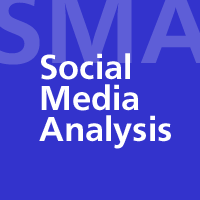As the measurement clubs start to work out their competing standardization efforts for measuring social media, the battle to define influence is flaring up in all the usual places. And while I won't attempt to settle the debate over how to measure influence, I want to point out that the topic is more interesting than whether Klout scores mean anything. A growing group of companies is experimenting with different approaches. Influence, apparently, is the new gold rush.
At Defrag this year, I saw several new companies with new variations on analyzing influence and profiling people. One startup founder described an entirely new—and promising—approach that he's about to take into alpha testing. To his credit, he preferred that I not use the influence buzzword to describe his business.
We call it influence, because that's what it's not
Dance like no one's watching. Sing like no one's listening. Tweet like no algorithm is coldly deciding your social worth.
—Chris Sacca (@sacca)
I'm not comfortable with the influence label, because it's not really what anyone measures. Influence—the real thing, not the black-box metric—isn't hard to define, but it's practically impossible to measure. So everyone uses proxy data, and the proxies vary by company.
A few years ago, I heard Barak Libai speak about the use of agent-based modeling to calculate the value of word of mouth, and I suspect that influence is essentially the same question. But I haven't heard anybody going down that path in the commercial market. It's probably too hard for practical use. Instead, everyone uses some combination of network connections, topic analysis, and audience reaction, which—obviously—equals influence when combined with pixie dust in the correct proportions.
As I started this post, I reached the chapter on influence in Duncan Watts's recent book, Everything Is Obvious: *Once You Know the Answer, and he fairly demolishes the whole idea of measuring influence. In all but the most trivial, contrived scenario, influence is just too complex. It seems the influence controversy isn't limited to the social media discussion. Even in the sociology lab, they use proxies.
If people want "influence," let's sell it to them
If we dial back the expectation that metrics represent precisely what the label says, we might find some use in the growing crop of "influence" tools. We have a selection of single-purpose tools, of course, but it's also common for these companies to provide hooks to connect into other programs. They provide a filter for finding people who have more followers, or whose words seem to lead to more action online, and so one or more of the influence proxies frequently shows up in social media tools.
Here's what I've seen so far. Where available, I've linked to useful information about APIs, FAQs, and how the scores are generated for each company. As always, once you start looking for more companies, you find that they're different in interesting ways.
- Appinions

Find and profile influencers relevant to topics defined by Boolean queries. Uses text analytics to understand statements by, and about, influencers and specific topics. (api, faq) - Connect.Me
A reputation-scoring system based on individuals recommending each other. Tags link recommendations to specific topics. Connect.Me promises not to mine or sell user data, so it's not an option for developers looking for influence scores. - Fluencr
 (new Mar 2013)
(new Mar 2013)
Perks for consumers, endorsements for marketers. - Identified
A career-oriented marketability score based on how well Facebook profiles match what employers search for on social network sites. (how) - Klout

A single-score influence metric based on social network activity. "The standard for influence," at least in the sense that it's the one everyone's arguing about. (api, faq, how) - Kred

PeopleBrowsr's single-metric scoring system based on online influence and outreach. (api, how, intro) - Little Bird
 (new Oct 2012)
(new Oct 2012)
Identify influencers on a topic—both established and emerging—and also followers, compare specific people's connections with the influencer set, and see what the influencers are sharing. (intro) - PeekYou

A search engine for people with a single-score influence metric based on online activity. (api, faq, how) - PeerIndex

Influence analysis with scores broken out by topic and activity, audience, and authority subscores. (api, faq, how) - PeerReach
 (new Mar 2013)
(new Mar 2013)
Influencer scoring within broad topics, audience analysis, upstream influencer topics. (api, how) - PROskore
Business-oriented reputation and experience score based on social network activity, career profiles entered on the site, and on-site engagement. (faq, how) - Spot Influence (now SpotRight
 )
)
Contextual influencer identification and analysis based on reach, topicality, and impact. (api, faq, how) - Tellagence
 (new Oct 2012)
(new Oct 2012)
Predict the spread of information in social networks to identify the critical members to reach. But don't call it influence, because they don't. (intro, faq, how) - Traackr

Influencer search and profiling based on reach, resonance, and relevance. Traackr can also monitor and measure online activity by influencers for campaign management.
Lack of a standard never stopped companies from selling their stuff. If we're going to argue about the value of "influence," let's at least consider more of the options.
More posts in the "Build or Buy?" series:

